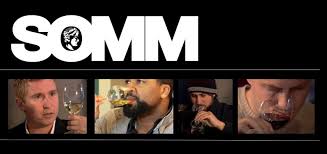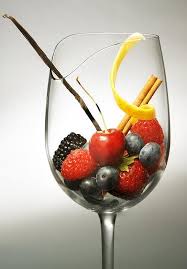-
Rethinking about tasting of wine
We must be rethought for tasting. In the film "Somm" - sommeliers who spend their diploma of master sommelier- they want to discover the aromas and forget the essential: the middle of palate and retro-olfaction.
With my experience of 20 years; I can tell the following conclusion.

For me you have two kind of wine in world : buccal wine without return of aromas and spiritual wine with long retro-oflaction - during 5 minutes.
Color of wine :
For me the color isn’t important because the winegrower can add something to color it…just i watch it for the evolution if you find orange on the bord of red wine. The wine isn’t young .-the rest on my ebook…..

The different noses
1st nose: nose the wine without swirling the wine.
2nd nose: nose the wine after swirling.
I’ve noticed that “amateurs” and professional often swirl their wines without smelling the first nose: this is a mistake. smelling the two different noses enables us to discover the complexity of the wine. With more experience, you can discover if the wine is vinified with natural yeasts or the laboratory selected varieties. Memory can recognize flavors that you know. But sometimes for the same wine: you will find flavors and i find another flavors. The most important is your memory. And to have a good memory, it is very important to smell food, spicy etc….

The attack
this is the first sensation on the tip of the tongue.
Unctuous: wine with good phenolic maturity. It is the perfect balance between the skins, the seeds and the flesh of the grape.
The middle of wine
this is the flesh of the wine and the grape. It is the most difficult to define. It starts after the attack and ends before the finish.
Few examples :
Ample: sensation of amplitude
Concentrated: tight middle with a lot of content
Short: remains only fleetingly on the palate

The finish
two parts determine the finish:
In the mouth, just after the middleAfter deglutition (swallowing), the aromas come back to the mouth: this is retro-olfaction or recurrence in the mouth.
Descriptions of the finish
For whites, the finish can be: ∙ short
∙ long
∙ vigorous ∙ round
∙ sharp
∙ semi-longComment: a wine made from organically grown grapes (ripe, non-chapta- lised) and vinified with natural yeasts, generally possesses residual sugar. The finish is round.
For reds, you will find tannins that can be:
∙ supple (Gamay)
∙ hard and forward, which can create an imbalance in the wine or not (languedoc-roussillon, south West, young bordeaux)
∙ hard but fine (Pinot-noir or older wines) that do not create and imbalance in the wine
∙ rustic
∙ fleshy (syrah)the finish for red wines can be: ∙ long
∙ short
∙ semi-long
∙ unbalanced
retro-olfaction
retro-olfaction is increased ten-fold when the wine is produced or- ganically and vinified with natural yeasts. I have never found great retro-olfaction with wines vinified with laboratory-selected yeasts. It determines the two styles of wine: spiritual and buccal (read Petit Dico des Vins Naturels).
the possible aromas that you will find in the retro-olfaction of white wines:
∙ menthol
∙ spice
∙ minerality
conclusion
During a tasting, the different phases should be described. but the last phase concludes what you feel. example: “Conclusion: this voluptuous wine with a masculine character (green pepper aromas and forward tannins) is great value for money and andré bourguet’s best vintage.” extract from Vin de Campagne 2007 – www.vinpur.com – directory
The new change of tasting : How to recognize the sulfur in wine
Too much sulphur: generally present in white wines and rosés.
It is present in the nose (burnt rubber) or in the finish (metallic).
Smell the nose of the empty glass: in order to recognise the purity of a wine, smell the glass emptied of its wine. If it is pure, these aromas will smell of fruit. on the contrary, if the wine maker has used too many chemical products, the nose of the empty glass will smell of burnt rubber or matches
From my ebook an another article about that
Jean-Charles Botte crazy sommelier in Oslo

